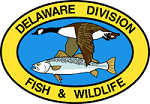Search Level: Standard
Search Term(s): Quercus alba (1 record found)
Search Term(s): Quercus alba (1 record found)
FAGACEAE
Beech Family
Beech Family
Quercus alba (white oak)
[ + ]
Synonym
--
Carex Section
--
Meaning of Scientific Name
Quercus: Latin name for Oak genus; alba: white
Native Plant
Yes
Life Form
Perennial Tree
Phenology (Flowering Period)
April-May
Physiographic Province
☑ Piedmont
☑ Coastal Plain
County Distribution
☑ New Castle
☑ Kent
☑ Sussex
Habitat
Woodlands
State Status
Common
Piedmont Status
Common
Coastal Plain Status
Common
Global Rank
--
Federal Status
--
Geographic Affinity
--
Species at Limit of Distribution
☐ Northern
☐ Southern
North American Distribution (Non-indigenous Species)
--
Coefficient of Conservatism
5
Invasive
--
Invasive Watchlist
--
Global Origin (Non-native Species)
--
Wildlife Values
Oaks are host plants for a very wide variety of moths and butterfly's; acorns provide food for many woodland wildlife species, including turkey; if bark is shaggy and exfoliates, such as with white oak, it can provide roosting sites for bats; oaks grow tall, are long-lived and can have large trunk diameters, which increases the probability of natural cavities for wildlife to use for shelter and nesting.
Wetland Indicator Status
FACU
Medicinal Properties
Part used: Bark. Topically used for capillary bleeding, athlete's foot, burns, bruises, nosebleeds, and open sores; as a mouthwash for periodontal disease, and in a sitz bath for episitomy incisions and hemorrhoids. Internally used short-term for diarrhea, dysentery, or gastric bleeding.
ID Notes
--
Additional Info
Quercus alba will hybridize with Q. michauxii, Q. montana, and Q. stellata.
Habitats in which this plant occurs
Ancient Sand Ridge ForestForest Interior (Non-tidal Wetland Piedmont)
Forest Interior (Non-tidal Wetland Coastal Plain)
Forest Interior (Upland Piedmont)
Forest Interior (Upland Coastal Plain)
Upland Forest (Chestnut Oak Woodland)
Photos
[show|hide]
(click on thumbnail for larger view)


